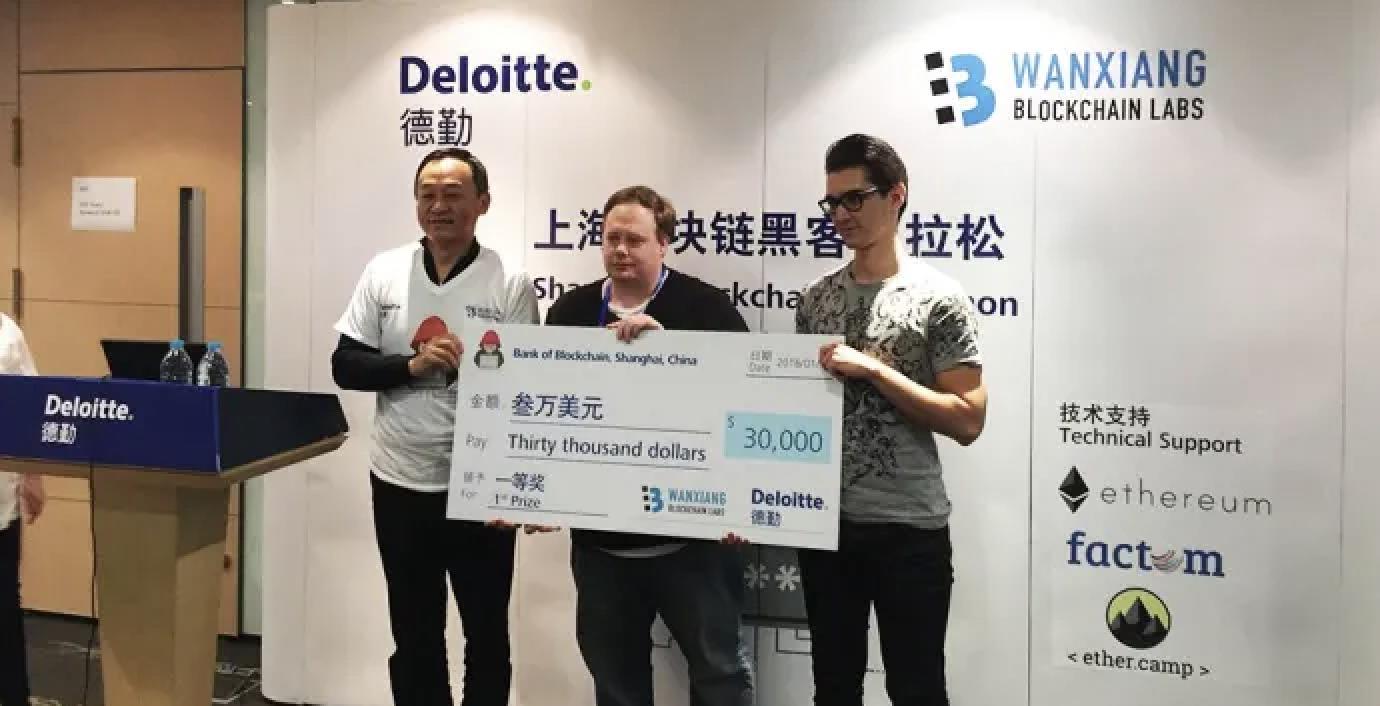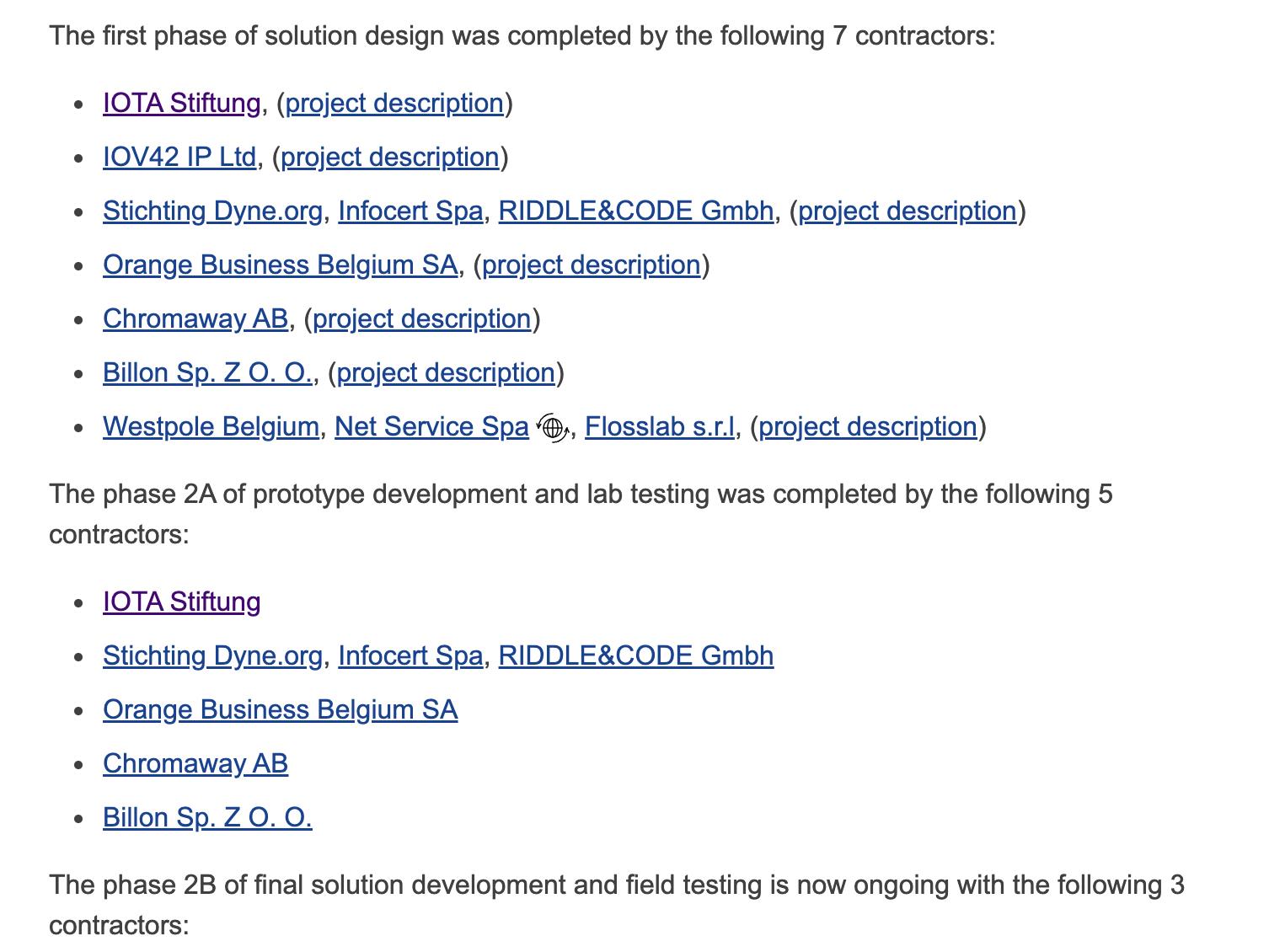Deep Tide TechFlow: Sunny
IOTA: Dominik Schiener

"Today's IOTA is far more than just called the Internet of Things chain."
--Dominik Schiener, Co-founder of IOTA
IOTA may seem very unfamiliar to those who entered the circle during the last bull market. For those who entered the circle before 2017, IOTA was once the "thousandfold coin" that rushed into the top ten of Coinmarketcap and attracted much attention, positioning itself as the blockchain base for IoT tailored for large enterprises and governments.
At that time, IOTA was criticized by MIT's Media Lab for developing a "blockchain" without blocks and chains, described as "IOTA is a currency I love to hate" by scholars at the Hebrew University of Israel, and mocked in an article by a TechCrunch journalist. The original founding team also caused quite a stir on social media.
Controversial projects often grow amidst external criticism and pressure.
After a bull-bear cycle, are the old projects still around? In a recent communication with IOTA's co-founder Dominik, it was learned that he had recently moved to Abu Dhabi in the Middle East and is actively promoting the application of IOTA 2.0 Layer 2 network and the on-chainization of real assets. "We have rid ourselves of many negative factors, including our technology, some co-founders, and the disputes among them," said Dominik.
When it comes to disputes, it is quite normal for team members of various projects to have conflicts in the early years. Ethereum founder Vitalik once revealed that the success of the Ethereum project came from getting rid of unsuitable employees and founders, emphasizing the importance of believing in the right technology.
Making a comeback, turning over a new leaf. Today's IOTA not only reflects on past mistakes in decision-making and technology, but also repositions itself: not just a blockchain project focused on IoT, but a general-purpose chain compatible with Ethereum.
It seems that while everyone is venturing into Layer 2, IOTA is no exception, but they are more ambitious, deciding to develop IOTA into a public chain comparable to Ethereum and pursue a path of government and large enterprise business. In addition to the Middle East, IOTA also has a presence in the European Union and Africa, working hand in hand with governments to achieve their ultimate goal of "Digital Autonomy for All."
Below is the interview summary of Deep Tide TechFlow with IOTA co-founder Dominik Schiener.
TechFlow: What is your background and the story of founding IOTA?
Dominik:
I entered the cryptocurrency field in 2011 and went full-time in 2012. Initially, I started with mining and later had the idea of creating a cryptocurrency exchange. I joined Crypto Valley in Zurich and contributed to its development and friendly regulatory environment. However, our efforts were not successful. During the bear market of 2013-2014, I lost a lot of money. At that time, I was very young, only 18 years old, and very passionate about cryptocurrencies. My interest turned to Ethereum, and through contacts with the founder of Ethereum and participation in activities at the Wanxiang Blockchain Labs, I improved my skills and won the largest blockchain hackathon in 2016.

At the end of 2015, I was involved in founding IOTA. The core idea of IOTA has two main aspects.
First, we realized that blockchain itself has limitations in scalability.
-
It faces issues such as high transaction fees, energy consumption, and miner control over the network. We realized the need to invent a new architecture that could overcome these limitations and move away from single-threaded blockchain.
-
Instead, our goal was to create a multi-threaded architecture, similar to the development of microprocessors. Our idea was not to have a single core to process transactions, but to have multiple cores to handle as many transactions as possible. This led to the birth of the Tangle concept, and in 2015, we were the inventors of this new architecture.
The second goal was to explore new use cases. At that time, blockchain was still a relatively new concept, and few people knew about DeFi, NFTs, or tokenization. Everyone was exploring various possibilities, and the direction was very broad.
IOTA took the lead in promoting the adoption of blockchain by collaborating with large companies, governments, and enterprises. To achieve this goal, we established a non-profit foundation in Germany and sought regulation. Our goal was to help large companies integrate IOTA and develop various application cases in areas such as mobility, energy, trade and logistics, digital identity, smart government, and smart cities. In 2017, when the adoption of blockchain was low, IOTA emerged as a pioneer, demonstrating the potential of the technology.
TechFlow: What happened after 2017, facing numerous public criticisms against IOTA and its team?
Dominik:
Between 2018 and 2020, I would say we redefined the goals of IOTA and eliminated some controversies.
For IOTA, we were starting from scratch:
-
During our 2015 ICO, we only raised $500,000.
-
We did not have a large reserve of funds like other projects, as they allocated a large portion of their token supply to themselves and then had hundreds of millions of dollars for marketing and growth.
IOTA was truly a community project. Starting from scratch and gradually becoming very large, this meant involving a lot of funds and power. Therefore, there were often different opinions among the founders, as many of them did not even have experience with large companies or projects.
They could also be said to be first-time entrepreneurs. So this meant that they would change during the entrepreneurial process. If people change, conflicts arise because everyone has their own pride, but everyone has the motivation to make things bigger.
This led to different viewpoints. So the arguments between them began. Unfortunately, unlike Ethereum, the controversies of IOTA leaked to the public, as I also know that there were many controversies this year, especially in the early stages, but they (Ethereum) kept the controversies private.
So for IOTA, they committed to making everything public, and the arguments took place in public. That's why people used to associate IOTA with controversies,
which is also why we need to change this and ensure that we always remain true to achieving the true goals of IOTA.
What we did at that time was clearly to reposition IOTA in the market, getting rid of its flaws, including our technology at the time, which was very difficult to use, very cumbersome, for example, you could only use an address once, and so on.
TechFlow: So, how has IOTA changed compared to before?
Dominik:
When you think about today's IOTA, it should not be seen only as a project for the Internet of Things.
We changed other bad aspects of IOTA, such as the board of directors, and got rid of some of the founders.
From 2020 to 2022, we focused on improving IOTA's protocol to make it not only limited to the Internet of Things, nor just limited to enterprise use cases, but to enable us to achieve DeFi, NFTs, and have smart contracts, making IOTA compatible with the Ethereum Virtual Machine (EVM).
In 2022, we launched an evolved version of IOTA called ShimmerEVM as a test platform before product release on the IOTA network. Recently, we released ShimmerEVM, a fully EVM-compatible second-layer network that will soon be launched on IOTA. IOTA's evolution has transformed it from a difficult-to-use chain in 2015 to a highly scalable network with one-second confirmation time and thousands of transactions per second (TPS). It is now also compatible with EVM, making it possible to integrate DeFi and new use cases on IOTA and Shimmer.
Our next stage, IOTA 2.0, will introduce a leaderless consensus algorithm, a staking mechanism for network security, and a fully scalable and decentralized network. This major update is planned to be released early next year to establish comprehensive competitiveness with Ethereum. Additionally, we are working on introducing smart contracts at our first layer to enhance usability and shared security. Our technology roadmap is supported by a professional team of about 110 people at the IOTA Foundation and has undergone extensive peer review and collaboration with renowned institutions such as Imperial College London and the University of Zurich.
Shimmer EVM has already attracted several important projects, with a total locked value of about $2.5 million. The network is still in the early development and bootstrapping phase. In the next phase, our focus will be on adding more bridges for liquidity and expanding the listing of Shimmer on other exchanges.
TechFlow: After the repositioning, has IOTA's corporate strategy changed?
Dominik:
IOTA has excelled in practical applications and has been involved in projects such as building European blockchain infrastructure and developing digital trade infrastructure and digital identity in Kenya.
Our focus is to position IOTA as the preferred ledger for digital trade and transparent supply chain. Additionally, we are actively engaged in tokenization, starting from US Treasury bonds and gradually expanding to real estate and other securities. We believe this will attract new users and create new financial markets on the blockchain. Obtaining regulatory approval and collaborating with governments is a key aspect of our strategy, and we have a dedicated team for regulatory affairs and partnerships with governments. While the Internet of Things is an important part of our application domain, our scope is broader, covering various use cases such as human digital identity and financial applications. Currently, we are focusing on major IoT use cases such as digital identity for machines and product passports.

TechFlow: What do you think are the actively explored and socially significant use cases for IOTA at the moment?
Dominik:
Trade finance is indeed an exciting use case, especially in promoting financial inclusion. Our goal is to create liquidity pools to support farmers in countries like Kenya and Tanzania, enabling them to export goods and access financial support. By leveraging blockchain technology and our capabilities, we can empower people and provide banking services to the unbanked. We are actively working on projects in this area and consider it as one of our future focus areas.
References:
-
https://techcrunch.com/2018/08/09/cryptocurrency-insecurity-iota-bcash-and-too-many-more/
-
https://www.coindesk.com/markets/2018/04/14/iota-the-37-billion-crypto-developers-love-to-hate/
-
https://www.crypto-news-flash.com/iota-drama-cofounder-threatens-legal-action/
免责声明:本文章仅代表作者个人观点,不代表本平台的立场和观点。本文章仅供信息分享,不构成对任何人的任何投资建议。用户与作者之间的任何争议,与本平台无关。如网页中刊载的文章或图片涉及侵权,请提供相关的权利证明和身份证明发送邮件到support@aicoin.com,本平台相关工作人员将会进行核查。




